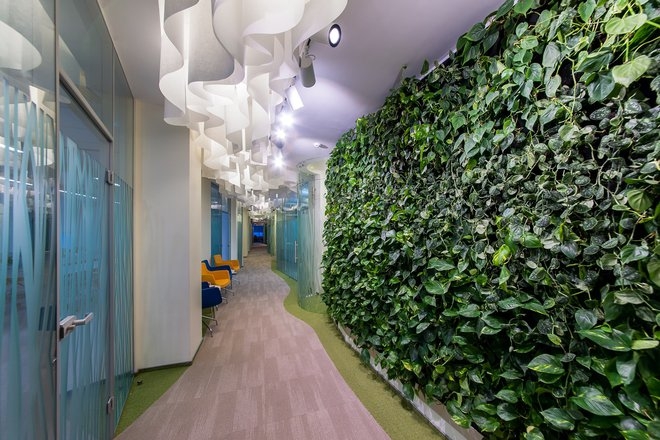How to use lighting equipment with ceilings made of “architectural” paper.
Ceiling systems made of non-woven, non-flammable material, which we conventionally call “architectural paper”, always offer a wide choice for architects and designers, due to their diversity and individuality. In fact, you yourself are the author of each project. But in order for us to really be able to reproduce a ceiling system as close as possible to your idea, you need to know about some features in their design. In this article we will talk about how to combine light and our designer ceilings.
The main evaluation criterion is the working height of the designed ceiling.
Conventionally, we divide ceilings into heights of up to 600 mm, up to 1200 mm and more than 1200 mm.
For example, we can use Honeycomb ® , Wave ceiling ® and Drop Stripe ® honeycomb ceilings in working heights of up to 60 cm, up to 120 cm - this list also includes the Drop Gondola ® suspended ceiling .
But with excess potential heights, more than 1200 mm, as a rule, we work with only one Drop Stripe ® system . But this should not upset you in any way, since this is the most diverse ceiling system in its design capabilities.
After choosing a ceiling system, the next step is to assess the purpose of the room, and, as a result, you already have an idea of the required minimum standard illumination depending on the type of room. There is a lot of this information available for free on the Internet, we will not dwell on it. At this stage, you understand that if you are working on a jewelry showroom project, then the minimum level of illumination of the store starts at 1000 Lux, and if we are designing a clothing sales area, then the minimum requirements here are already 300 Lux.
We believe this should be the starting point in choosing the light fixture you will use with our paper ceilings. For example, with low height options and using a Honeycomb ® honeycomb ceiling , you can place the luminaires in the ceiling space above our decorative system. These can be square or linear lamps from the most popular brands, reliable and simple. Consider one feature: the light absorption coefficient of our Drop Paper ® , depending on the density of the material, is from 25 to 45%. Therefore, you need to make an adjustment for the number of lamps “hidden” above the designer ceiling, taking this fact into account. Don’t be afraid to use a lot of light; if they are combined with lamellas made of architectural paper, it is better to overexpose the ceiling a little than to underexpose it. When you are designing the placement of lamps in the ceiling area and want to get a uniformly illuminated ceiling, take into account the dispersion angle of the lighting devices used to avoid under-lit areas! And we share our life hack: try to ensure that the distance from the lamp located above the decorative ceiling to the upper edge of the lamella is at least 20 cm. This will increase the dispersion angle and illuminate most of the surface of the architectural paper ceiling, avoiding under-lit areas.
If the project has a Honeycomb ® honeycomb ceiling , you can use 2 types of lighting fixtures: general base lighting in the ceiling space in combination with local lighting, for example, tables in a bar or restaurant, which you can easily use by running a cable inside the honeycomb. And if the size of the lamp is small, it can be placed inside the honeycomb at the level of the lower edge of the decorative ceiling. With a cell size of maximum 22 cm, you can use spots with a diameter of up to 10 cm, integrating them inside the cell itself. As you can see, there are enough options. And we looked at only one system!
Drop Stripe ® works well with linear luminaires that are placed between or above the slats. Just be sure to use a diffuser so that the light does not shine in the eyes of visitors who want to better see the laminated ceiling above their head. In some projects we illuminate each lamella, in others the lamps are placed with a rhythm of 1 to 3 (1 lamp, 2 lamellas skipped). An important factor here is the distance between the lamellas: if the distance is about 40 cm, then each lamella needs to be illuminated. Remember the light absorption coefficient from the last paragraph!
Drop Stripe ® can also be combined with pendant lamps, selected in the appropriate style, located under the slats. Very often we come across such decisions.
LED strips with diffusers are an excellent opportunity to program scenario lighting solutions: do you need the effect of the northern lights? Or the shimmer of multi-colored waves? This is all possible in our joint work with your lighting equipment contractors on site.
Paralume ® offers to hide the spots inside itself, setting an architectural rhythm with its form, and as a result you get a luminous art object...
A special feature of Wave ceiling ® installation is that it is created directly on site and is attached to the mesh. Any lighting equipment can be installed above this grid in sufficient nominal illumination, adjusted for the light absorption coefficient of the material. As a result, the lighting equipment will be hidden from your eyes, you will get a perfect luminous ceiling!
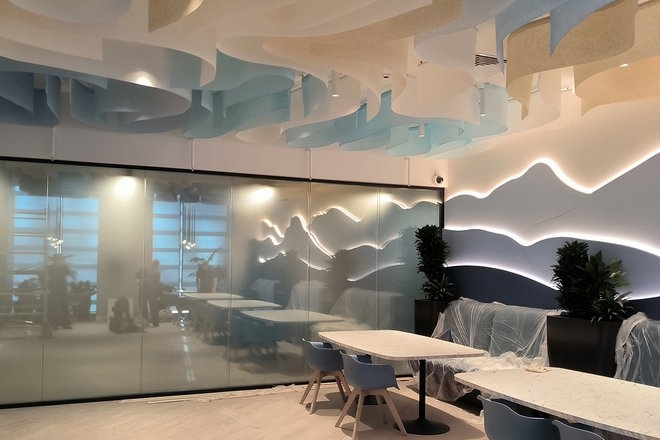
when-design-is-both-form-and-meaning
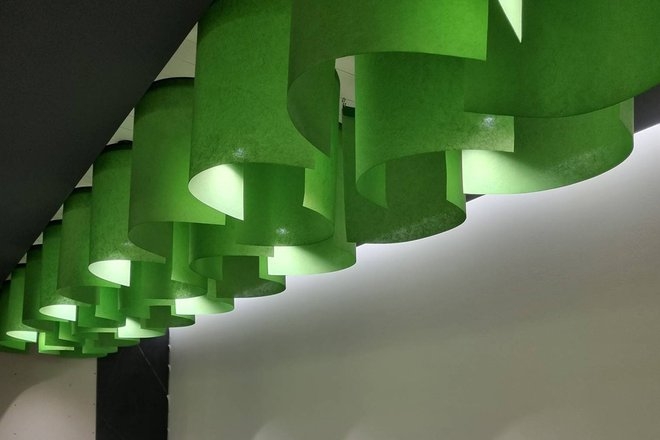
summer-melancholy-in-september
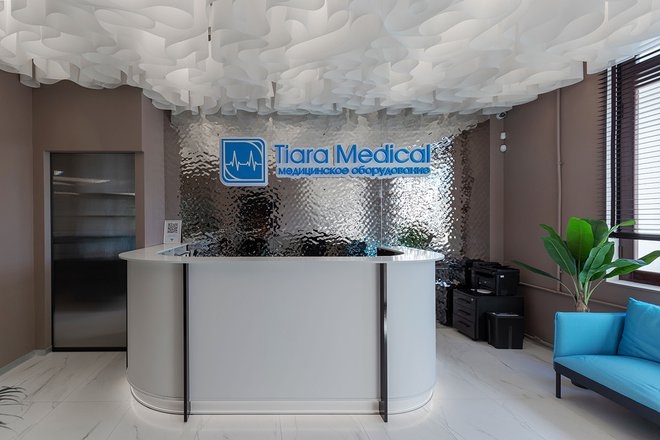
Decorative ceilings Paper Design® are now in Kolpino!
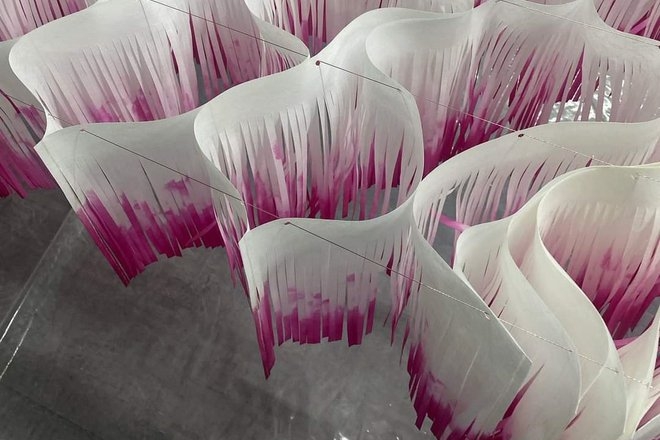
Renew Honeycomb ceiling
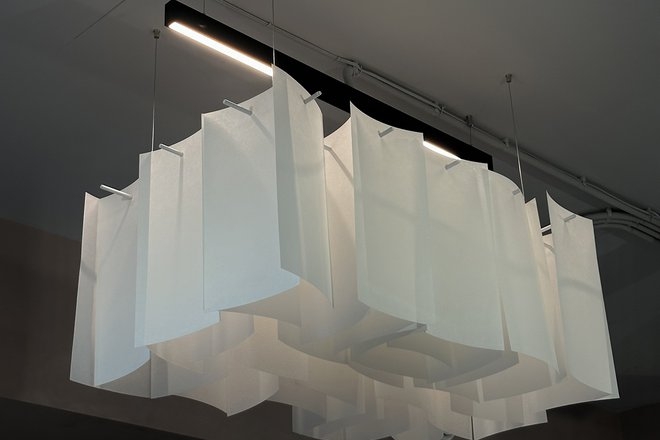
Designer chandelier made of non-woven material
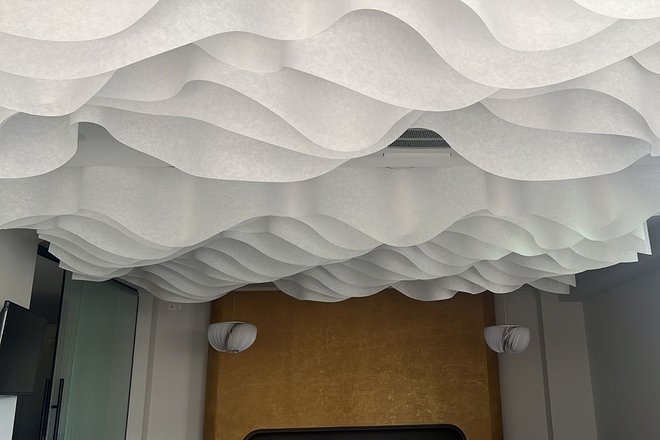
hotels
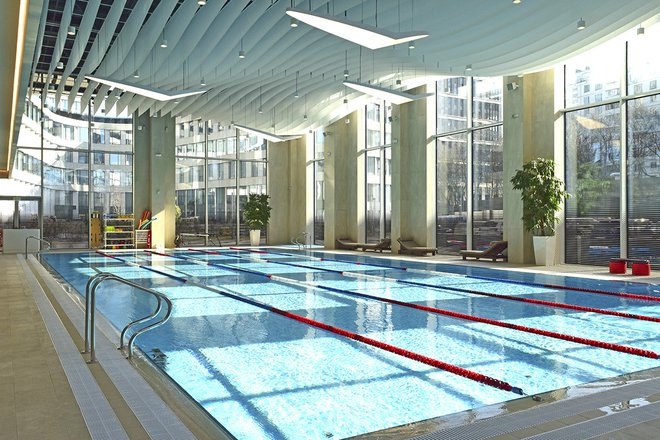
And again about humidity and paper ceilings
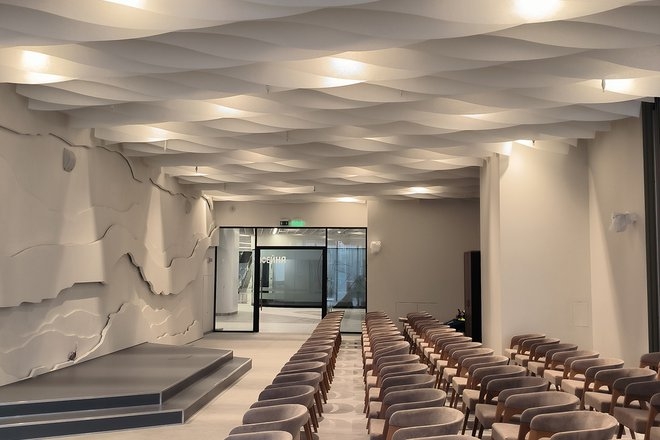
Drop Stripe® ceilings are now at MSU

Cheboksary. New project in River Port.
